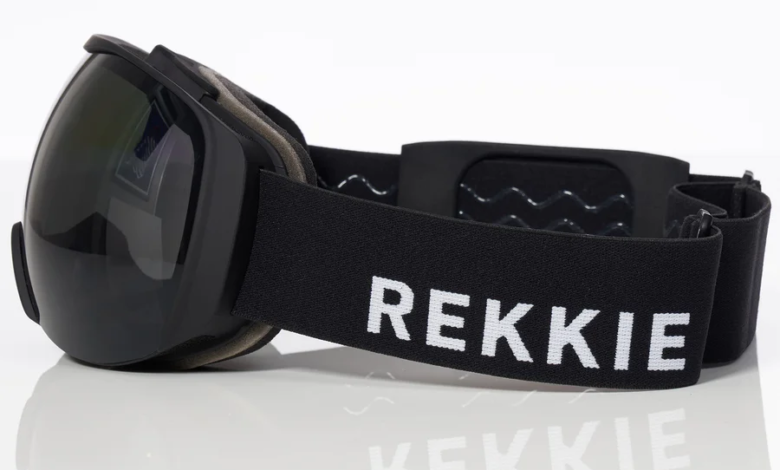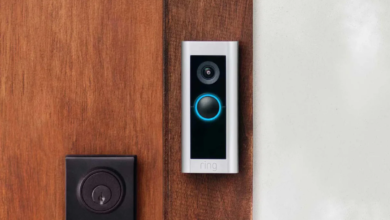Rekkie’s smart snow goggles prove that AR is useful right now

Since Oakley’s brief experiment with augmented reality more than ten years ago with their Airwave headgear, I’ve been intrigued by the idea of using ski goggles. Sadly, its venture into augmented reality was a complete failure: the Airwave was absurdly big and required a wrist-worn controller. Additionally, they were unaffordable at roughly $600 for what felt like an experimental product.
But since then, display technology has greatly advanced. And I’ve been eagerly awaiting the creation of a superior, functional version by another business. I was therefore thrilled to learn about Rekkie, an independent producer that debuted its first set of goggles with an integrated heads-up display last year.
Rekkie’s product, at $349, is still pricy, but much more in line with the cost of high-end, conventional ski goggles. More significantly, I discovered that AR has improved sufficiently that headsets like this finally felt helpful after spending many days skiing with Rekkie’s goggles.
The goggles
Rekkies almost have the appearance of a typical pair of ski goggles at first glance. The box on the right side of the strap that houses the power supply, Bluetooth, and long distance radios is the most obvious difference, though. A button for using the goggles’ interface is located on the outside of the pack.
The pack is one of the few inconveniences of using the goggles; it’s around 4 inches long and an inch thick. The Rekkies are more than twice as heavy as my typical pair at 253 grammes, but wearing a helmet made them feel rather light. Additionally, a black helmet might even (sort of) blend in. Your headwear will stand out if it is white or another light color, though. Though practically unimportant, this does provide a goofy impression. Additionally, if you prefer, it means you can’t wear the goggles underneath your helmet. However, neither of these was a deal-breaker for me, and I discovered that I could cover the battery pack with an over-helmet with ease.
But the Rekkie eyewear’ functional advantages far surpass their visual shortcomings. Their distinguishing feature is a dashboard that displays your location, speed, and compass information. If you’re skiing with friends who also have a pair, you can use the companion app to see where they are on the mountain and how far they are away. The eyewear can also play music, display notifications, and track your daily statistics.
A tiny, roughly 1-inch panel serving as the display is located in the center of the eyeglasses, close to the bridge of your nose. With this configuration, you may change the lenses to adapt to different lighting circumstances (a silver set is supplied, and the firm also sells lenses in other colors). Rekkie, however, has somewhat different lenses.
This indicates that the lenses are darker when looking up and towards the display than when looking straight ahead. I didn’t mind the difference, but others might find it annoying. Rekkie stated that it is thinking about making changes to the effect to make it more subdued.
More importantly, I discovered that practically all lighting conditions made the screen easy to see. Bright sunlight and overcast days did not obscure the dashboard or menus. Additionally, the overlays are not obtrusive because the display is positioned so that it is not in your line of sight as you are speeding down the mountain.
All of that might sound challenging, yet using the UI is incredibly simple. The main menu may be accessed by tapping and holding the side button on the battery pack. From there, you can choose a function by looking up, down, left, or right. You can see how many runs you’ve completed and how much elevation you’ve covered in your stats, which are located above. Right is “music” for controlling media playing, down is the live dashboard, and left is “texts,” which is a bit of a misnomer because it displays recent notifications from all apps (on iOS, notification previews must be enabled). You can tap the button to hide everything but the time from the latter.
This “clock-only” mode was one that I frequently used, especially after gaining some speed. The clock was one of my favourite elements, which may sound odd. I don’t wear a watch, and on a chilly day, constantly checking your phone can quickly drain its battery (and your fingers).
The ability to manage my podcasts and music from the goggles was also quite helpful. When I snowboard, I typically use AirPods, so digging under my helmet or foolishly yelling “Hey Siri” into my ski mask always makes me a little anxious. I was therefore overjoyed to be able to use my goggles for those chores.
Despite my complaints about the battery pack’s size, the goggles’ runtime is actually quite long. According to the manufacturer, the device should last around 10 hours, though it may last longer depending on how often you use it. Even in icy 10-degree (Fahrenheit) conditions, I was unable to completely deplete the battery over a full day of snowboarding. The goggles even functioned without charging for two days in a row.
I was first afraid that the battery pack’s exposed charging connector on the underside would expose it to the outdoors. I boarded during at than one snowstorm where no area of the goggles was able to stay completely dry, and I questioned whether I may be unintentionally harming them. However, the item turned out to be more water resistant than I had thought.
The goggles, according to Rekkie, aren’t technically waterproof but were made to handle the kind of rain you could encounter while skiing on an ordinary day. One stormy day in Park City, I (accidentally) put this to the test when I filled the Rekkies with snow after falling in a mound of powder.
Friend tracking
The technology tracks each other using the onboard radios of the goggles and the cellular signal from your phone. This means that if you have service, you can check their distance from you in both the Rekkie app and the dashboard view. The device’s radios have a range of about 2,000 feet, so you should be able to see whether someone is on the same run as you even if one or both of you don’t have service. However, you won’t be able to see them if they are, for example, on the opposite side of the resort.
In actual use, I discovered that the friend-tracking feature was most helpful when my husband—who was also sporting a pair—was hiking alongside me. We frequently lose sight of one another since I frequently descend runs much more quickly than he does. As he got closer, I was relieved to see the number decrease, which also helped with my impatience.
If you venture off-piste or into the backcountry, I can see how the feature would be even more useful. Knowing how far away your pals are can assist you ensure that nobody gets left behind since it is easy to lose friends in the trees.
Although the software is handy for tracking your friends’ locations, it is disappointing that it is limited in other ways. For instance, there is no way to access the statistics your googles tracked while you were on the mountain using the app. I’m disappointed that Rekkie doesn’t provide this because I’ve used ski-tracking applications like Slopes for years, which plan out all of your runs and follow your statistics throughout the day.
Rekkie Smart Snow Goggles Review
The app’s creators informed me that metrics and a number of other features are planned for inclusion. Additionally, they are developing new safety features, such as one that will turn off the live dashboard automatically once you reach speeds of 15 mph or higher, as well as ways to contact ski patrols at resorts in case of emergency.
If you buy a pair now, there’s a strong possibility you’ll see their capabilities grow over time because new functions will be added via app and firmware upgrades. That’s advantageous if you’re spending $350 on glasses that you’ll only wear for a few months of the year.
I was generally impressed by how helpful the Rekkies are. I was first thrilled to have a set of goggles that could monitor my data and project my speed and location in real-time, but I underappreciated how useful features like friend tracking, media controls, and an always-on clock would be. Several major tech firms have recently made bold predictions regarding the direction of augmented reality. The all-encompassing augmented reality spectacles that Meta and others have alluded to and similar promises, however, are probably still years away. Rekkie’s smart eyewear may be a more specialized product, but they demonstrate that AR applications can be developed quickly and without resorting to gimmicks.








One Comment